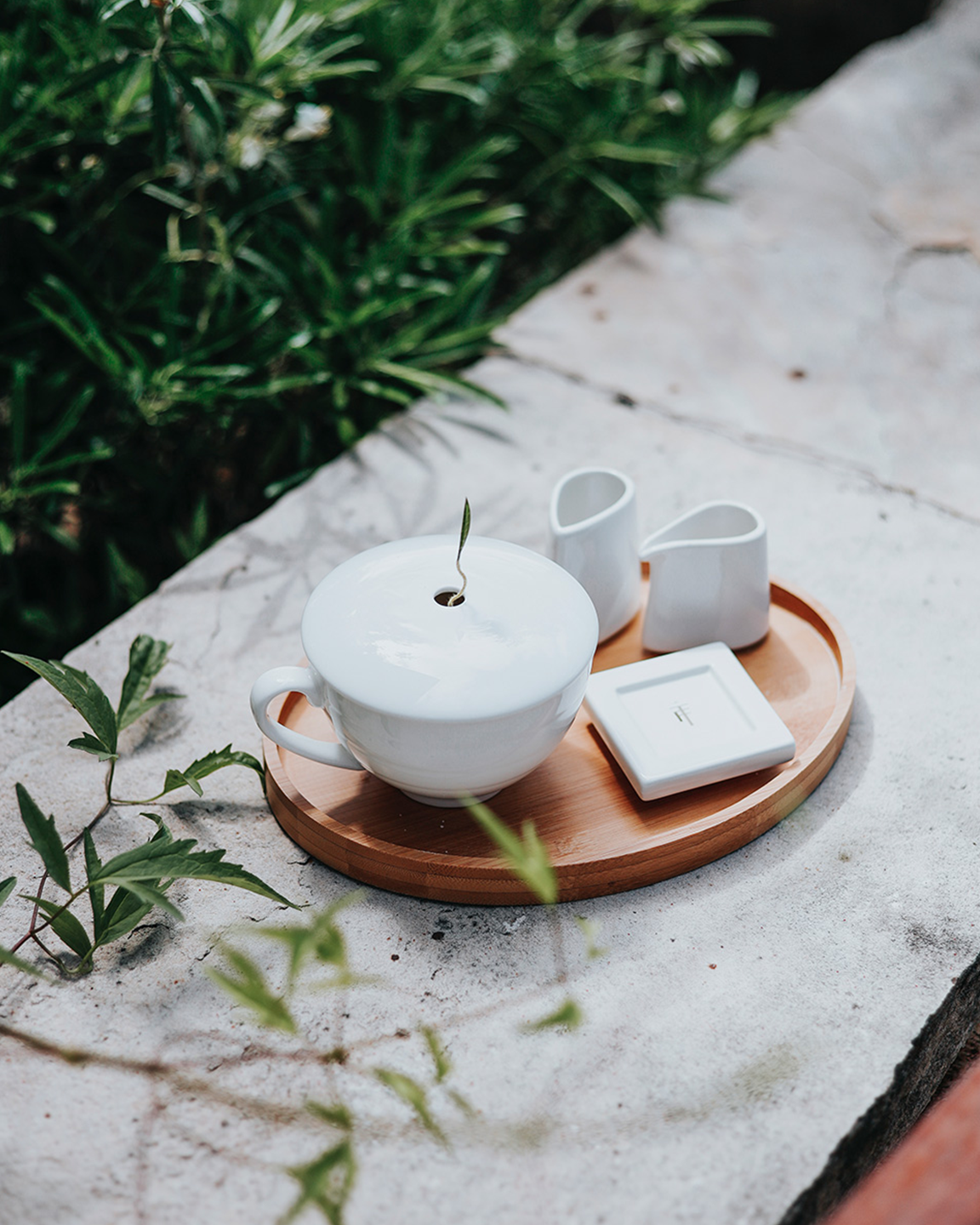
Supremely popular in the Western world while its greener counterpart continues its reign in the East, it goes through four stages of production: withering, rolling, oxidation, and drying/firing.
INTRODUCTION TO BLACK TEA
Complex and assertive, black tea is the most consumed of all the teas. Supremely popular in the Western world while its greener counterpart continues its reign in the East, it goes through four stages of production:
STEP 1
WITHERING

The process of reducing moisture levels in freshly plucked leaves to ensure caffeine concentration and flavour profiles can fully develop.
STEP 2
ROLLING

To retain freshness, recently withered leaves are (gently and) tightly rolled into pellets; often sap and other oils release further intensifying the flavour.
STEP 3
OXIDATION

Tea leaves are exposed to the oxygen in the air to dry and darken, contributing to the flavour, aroma, and strength of different teas.
STEP 4
DRYING/FIRING

The final drying process to stop oxidation and reduce the leave moisture content to allow for safe storage.
This process results in an intense taste and contains more caffeine – about 40 mg per cup – than less oxidised teas. Tea Forté seeks out small tea gardens dedicated to quality and sustainable practices in an effort to protect and benefit the land and its people. We select large, well-shaped leaves that are hand-processed and carefully crafted – a task requiring patience and a passion for our exquisite offerings.
DRINK TO YOUR HEALTH
Oxidised longer than any other type of tea, black tea is occasionally served with milk to soften the strong natural flavour that results, in part, from the oxidation process. Rich in antioxidants, studies have shown it to significantly lower the risk of heart attack and stroke, in part by lowering LDL (“bad”) cholesterol in the human body. Its flavonoids – a type of antioxidant – help to neutralise the damage free radicals can do to us through environmental pollution and high-fat diets.
"Studies have shown it to significantly lower the risk of heart attack and stroke, in part by lowering LDL (“bad”) cholesterol in the human body."

“Blocks of black tea were used as currency by Siberian, Mongolian and Tibetan cultures, in part because when stored properly, it doesn’t lose its flavour for many, many years.”
BLACK TEA: A HISTORY LESSON
Long before black tea became the preference of nearly three-quarters of the tea-drinking world, it was prescribed by herbalists as a tonic for boosting energy. This wasn’t a falsehood by any means; the naturally-occurring caffeine in black tea does, indeed, gently perk up those who drink it, and the feeling of calm alertness can last for three to four hours. In the 19th century, blocks of black tea were used as currency by Siberian, Mongolian and Tibetan cultures, in part because when stored properly, it doesn’t lose its flavour for many, many years. Across the 20th and 21st centuries, it’s been the leaf of choice of most iced tea enthusiasts in the warmer seasons thanks to its brisk flavour when served ice-cold.
BLACK TEA STEEPING INSTRUCTIONS

For black tea (known in China as red tea):
- Heat the water to 98 degrees Celsius
- Add one pyramid or 1 Tbsp of loose tea for 175-240mls of water
- Pour the heated over the tea and steep for three to five minutes to taste
- If adding milk, swirl hot water in your cup and add the milk to a pre-warmed cup; then add the tea
For black tea, milk and/or sugar may be added, although the addition of milk lessens the black tea’s antioxidant potential.
Lemon is another popular choice, but it’s critical to refrain from adding both milk and lemon to the same cup, as citrus causes dairy to curdle.
To enjoy Tea Forté’s fine selection of black teas for yourself, begin by exploring our collection.








